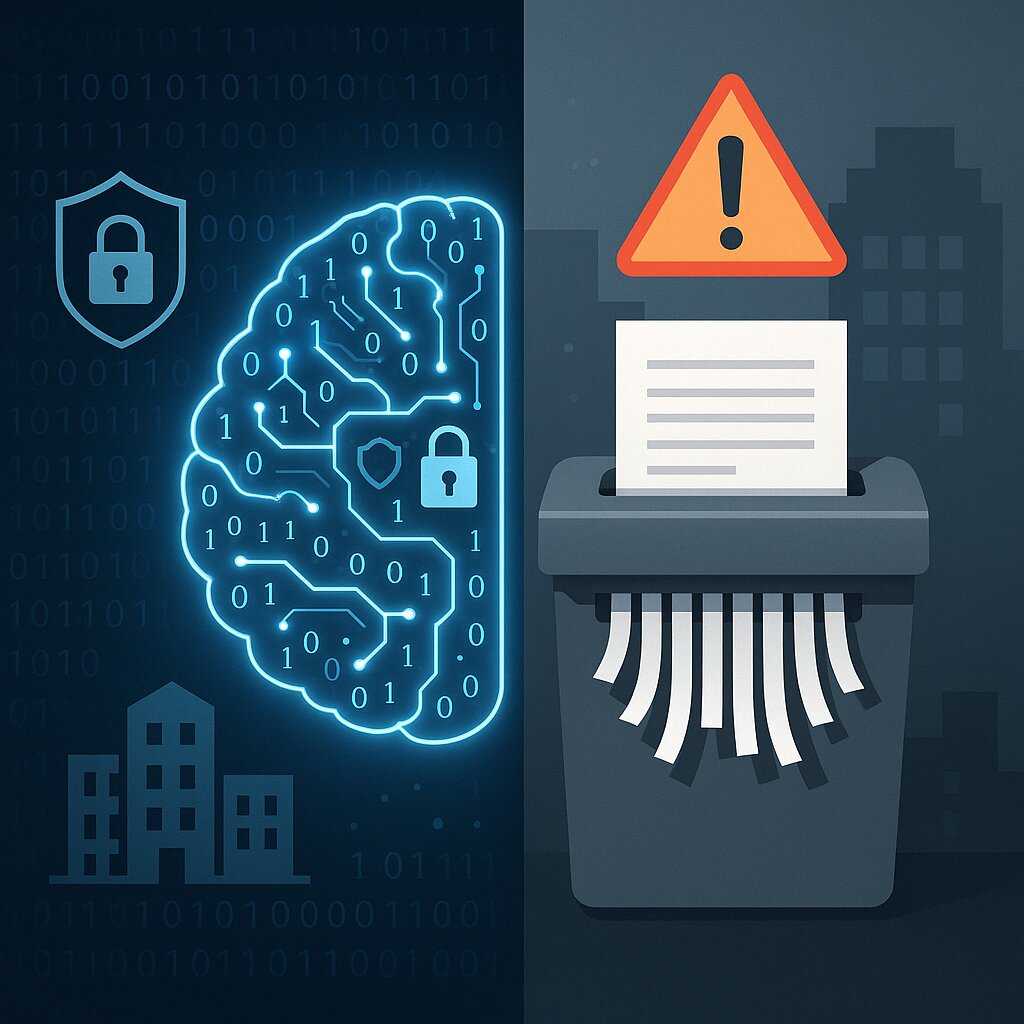
Artificial intelligence (AI) is unlocking new efficiencies, smarter customer engagement, and stronger decision-making across industries. It’s also exposing serious new vulnerabilities, especially for small and medium businesses. In short, AI data security risks for medium businesses are on the rise.
With more data, more employees, and more connected systems than ever, medium businesses are increasingly attractive targets for cyberattacks. And while many already invest in security tools and IT providers, the complexity of today’s AI-driven cyber threats demands a new level of awareness and protection.
Here’s a closer look at the AI data security risks for medium-sized businesses, and how to prepare your company for what’s coming next.
The Expanding Role of AI in Business Operations
Mid-sized businesses are adopting AI to gain competitive advantages in areas like:
- Automated customer support and chatbots
- Predictive sales analytics
- Smart inventory and supply chain forecasting
- Natural language tools for HR and internal communication
- AI-enhanced data protection and monitoring
While these tools support growth, they also increase your attack surface and expose sensitive data across departments and systems.
AI-Powered Risks You Can’t Ignore
The following threats represent the most pressing cybersecurity risks for mid-sized companies using AI:
- Deepfake Executive Impersonation. AI-generated deepfakes are becoming a popular tool for cybercriminals. A realistic video or voice recording impersonating an executive can be used to trick employees into wiring funds or sharing sensitive information. When leadership is remote or less visible, the risk of unauthorized access spikes.
- AI-Enhanced Phishing Attacks. Phishing is nothing new, but AI has supercharged it. Hackers now use generative AI to craft emails that mimic your internal language, making them harder to spot. These phishing attacks are often paired with social engineering tactics and may target endpoints such as laptops, mobile devices, or Wi-Fi-connected systems. Here is a chilling article from Malwarebytes on how to recognize AI-generated phishing emails.
- Ransomware-as-a-Service (RaaS). Criminal networks now offer plug-and-play ransomware kits powered by AI. These kits allow less-skilled actors to launch complex ransomware attacks, targeting mid-sized businesses with limited in-house resources. These attacks can lead to catastrophic data loss and financial losses, especially if backups aren’t properly secured.
- Vulnerable Internet of Things (IoT) Devices. From smart thermostats to connected security systems, AI-powered malware can exploit overlooked vulnerabilities in IoT devices. Once inside, attackers can move laterally through your network, bypassing firewalls and accessing confidential data.
- Shadow IT and Third-Party AI Tools. Departments may deploy AI tools without proper vetting. These apps often have unclear security policies or insufficient access control, putting your cybersecurity posture at risk. Without a formal risk assessment, even a well-intentioned tool can become a gateway for unauthorized access or data breaches.
- Internal Weak Points You Can’t Ignore. Several in-house dynamics increase AI-related cybersecurity risk:
Strengthening Your Cybersecurity Strategy
A strong cybersecurity strategy doesn’t have to mimic a Fortune 500 blueprint. These steps can significantly improve your security posture:
- Create standardized AI usage policies. Apply uniform security measures for all departments using AI.
- Conduct regular updates and patching. Apply updates to all operating systems, apps, and firmware.
- Require multi-factor authentication (MFA). Combine strong passwords with MFA to secure employee accounts.
- Use layered defenses. Combine firewalls, real-time threat detection, encryption, and access control.
- Train employees continuously. Help them identify phishing attacks, deepfakes, and suspicious activity.
- Verify vendors. Choose security services with a track record in AI and mid-market protection.
- Secure backups. Keep backups offsite or in a segregated cloud location to recover quickly from cyberattacks.
Don’t Forget Physical Security
Many medium-sized businesses still handle sensitive information in printed form, such as client records, financial documents and employee data. Improper disposal of this paperwork creates real-world vulnerabilities.
Include secure document destruction in your overall risk management strategy. Professional shredding reduces your exposure and supports compliance.
Final Thoughts: Own the Risk Before It Owns You
AI presents exciting opportunities, but also introduces new and fast-evolving cyber threats. By investing in your people, your policies, and your protections, you can take control of your cybersecurity posture and protect what matters most.
Whether you’re protecting internal systems or guarding customer trust, a strong AI-aware cybersecurity foundation is no longer optional. It’s your frontline defense against tomorrow’s risks.
If you own or manage a smaller company, the AI threat landscape looks a little different. Explore our Guide to AI Threats for Small Businesses.
 Data security in small business: Threats from artificial intelligence
Data security in small business: Threats from artificial intelligence  Data Security Employee Training on a Budget for Small and Medium Businesses (SMB)
Data Security Employee Training on a Budget for Small and Medium Businesses (SMB)  8 Simple Tips to Protect Your Small Businesses Data
8 Simple Tips to Protect Your Small Businesses Data 

